NYC's Long-Awaited Davis Center Opens in Central Park
A stunning new facility at Harlem Meer opens to the public this weekend!


Los Angeles is a vast, sprawling city, and neighborhoods on the coast, like Santa Monica, Venice Beach and Malibu, have historically gotten much more attention than Downtown. Yet there’s a remarkable amount of history and many architectural styles represented in Downtown LA, including some Beaux-Arts and Art Deco gems. We joined the LA Conservancy for a walking tour of Historic Downtown and learned about some of LA’s most important architectural sites.
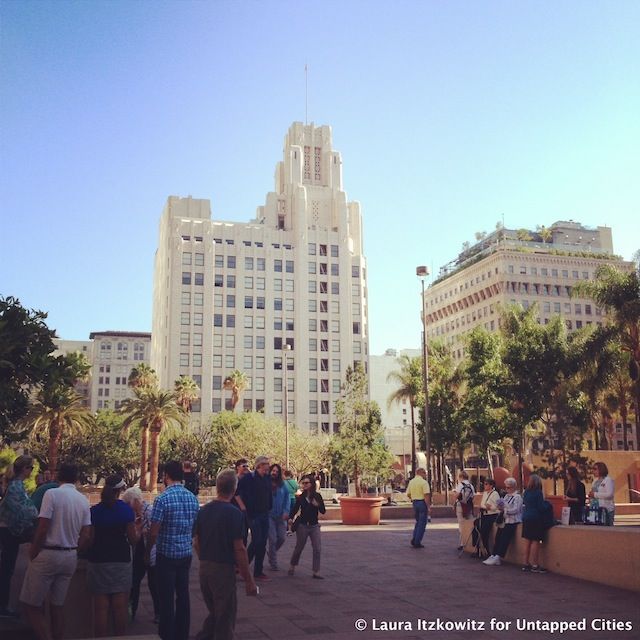
Though Pershing Square (originally called Plaza Abaja) has always been the heart of Downtown Los Angeles, the downtown area was not always a safe or desirable part of the city. Plaza Abaja was a Spanish land grant from 1781–one of two that remain in city hands. It underwent several transformations, including a redesign in the 1880s, when the railroad created a building boom in LA, another one in 1910-11, when there was a real estate boom. A parking garage was added under the park in 1951. In the ’70s and ’80s, Pershing Square fell into disuse and became a seedy area, but was redesigned once again in 1993.
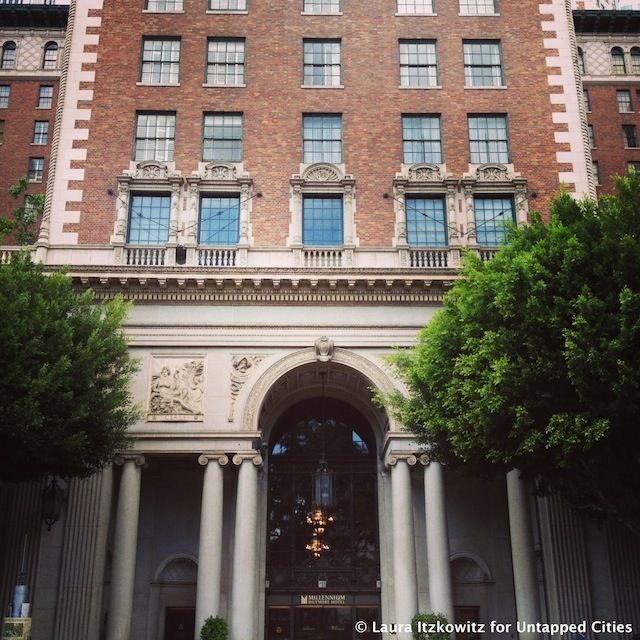
Constructed between 1921-1923, the Biltmore Hotel was meant to be LA’s premier hotel. It was built in the Beaux-Arts style that was popular in New York City and the East Coast. At the time, hotels were undergoing a transformation from resting places for the weary to social centers, and the Biltmore had many ballrooms and lounges for social gatherings. It was the first hotel in LA to have a radio hookup in every room, and when it originally opened, it had a concierge on every floor. The hotel was so successful that they added on a theater in 1924, though it was torn down in the ’60s. The hotel was renovated in the late ’70s and is a historic landmark. Be sure to check out the ornate pool as well.
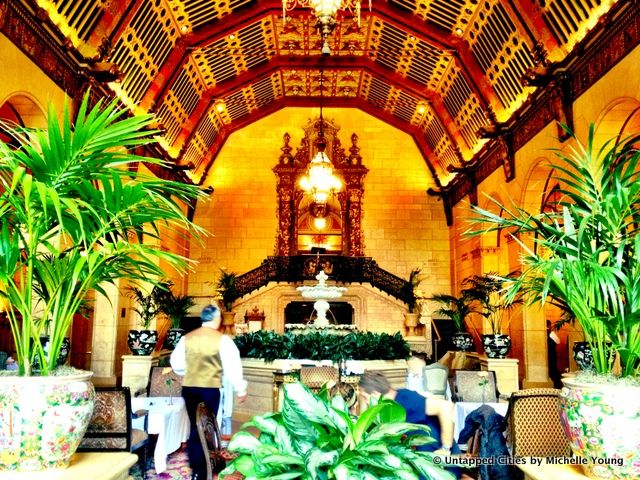
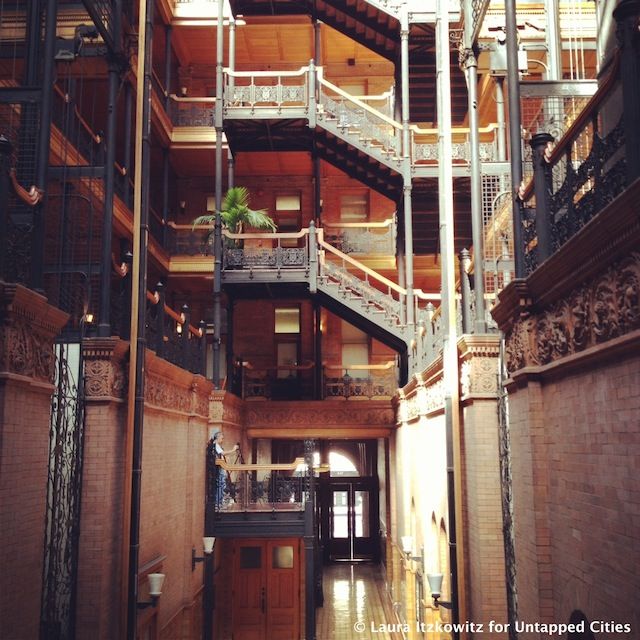
Even older than the Biltmore, the Bradbury Building was constructed in 1893 as a Victorian office building. A skylight allows sunlight to pour down and fill the lobby, which would otherwise be quite dark with all the brick and wrought iron inside. One of the original Victorian elevators still functions. The Bradbury Building was featured in many films, including Blade Runner, 500 Days of Summer and The Artist. It is the oldest commercial building remaining in LA’s center.
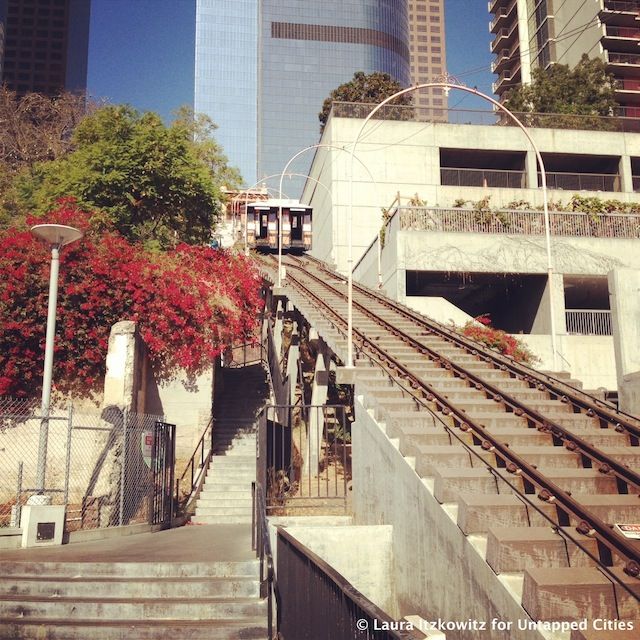
The Angels Flight funicular was built in 1901 to shuttle the rich Victorians who lived atop Bunker Hill down to the shops below. At the time, it cost a penny to ride. Dubbed “the shortest railway in the world,” it has worked on and off ever since. Every now and then, the city brings in goats to trim the grass on the hill nearby. The site was featured in 500 Days of Summer.
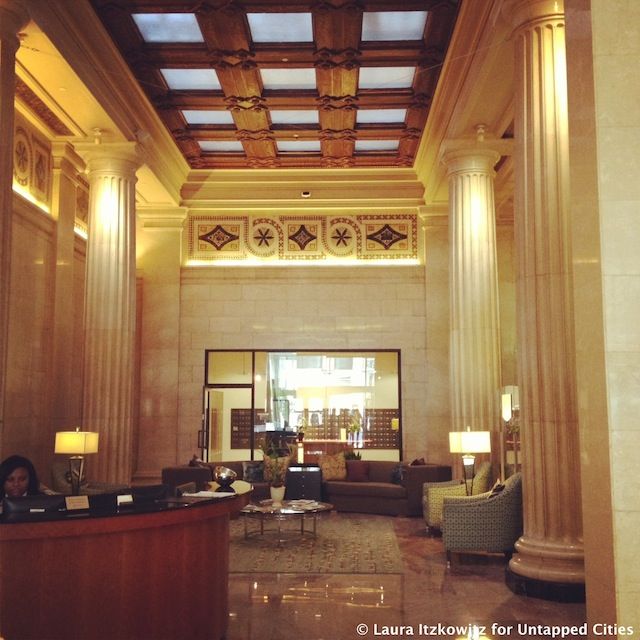
The Subway Terminal Building (1925) was once LA’s only underground subway station. The original metro system had one stop underground and the rest of the stops were aboveground. The Subway Terminal Building resembled New York City’s Grand Central Terminal with its Classical architecture and light-filled lobby. It actually had two lobbies: one for the subway and one for offices. The building has been used for many different purposes, including a Social Security Office, a place for the LAPD to keep stolen property, and today it has been redeveloped as condos.
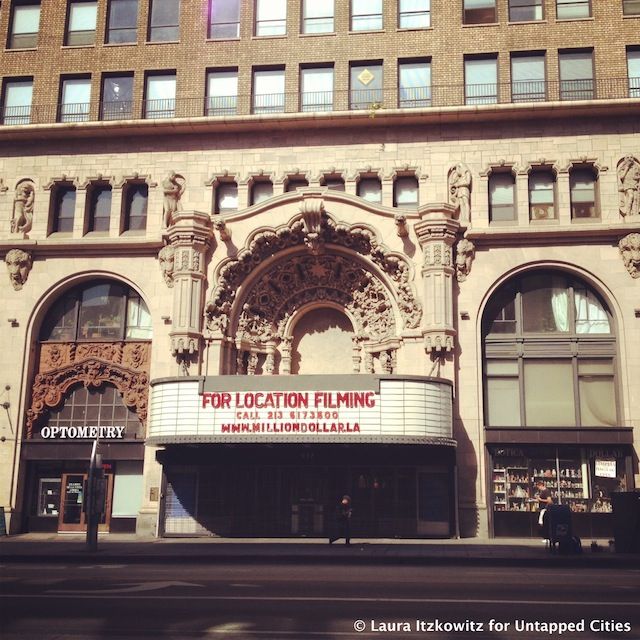
LA’s theater district is concentrated on Broadway and its famous Million Dollar Theater was built in 1917 at the northernmost edge of the theater district. It was constructed as a movie theater and a stage theater, since at the time they weren’t sure the movies were going to take off. William Mulholland, who oversaw the construction of the Los Angeles Aqueduct, had his office inside.
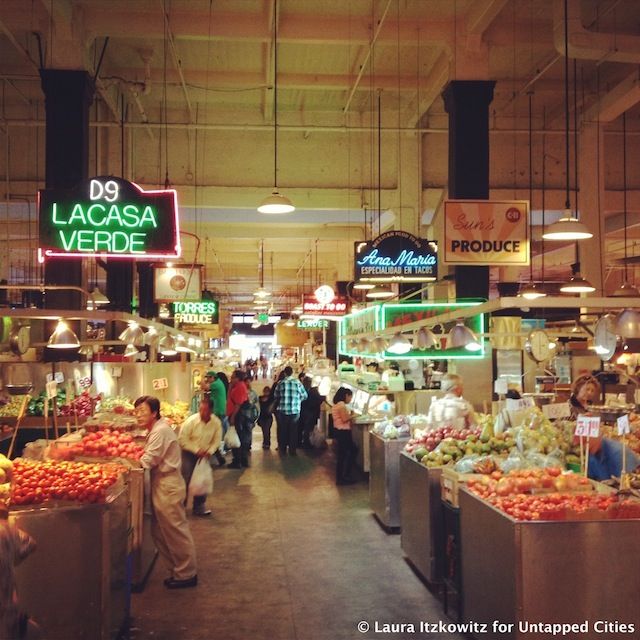
The Grand Central Market unites two adjacent buildings: one on Broadway (1897) and one on Hill Street (1905). Together, they have been operating continuously since 1917. The older building was LA’s first fireproofed and steel-reinforced structure while the newer building was the first reinforced concrete building in Southern California. It housed the Ville de Paris department store, which was one of the city’s largest and finest, until 1917. When the market was renovated in the ’90s, the vintage neon signs were restored and new ones created for the 50+ vending stalls.
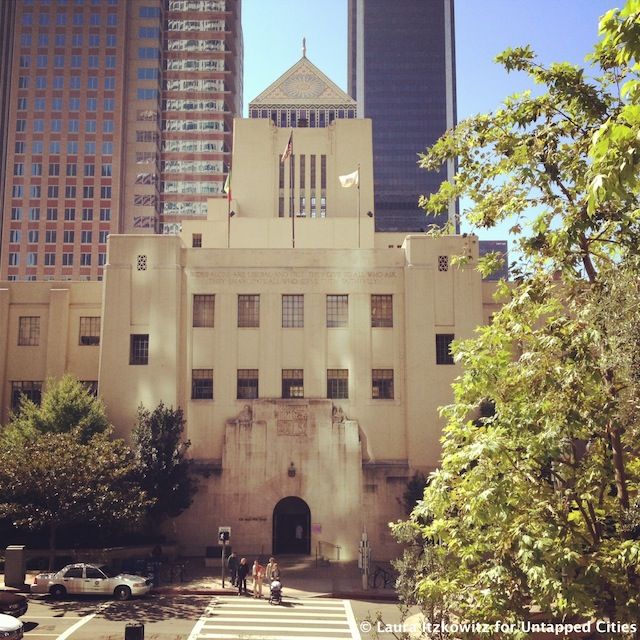
The Central Library was built between 1923-1926, during the transition from Beaux-Arts to Art Deco. The architect Bertram Goodhue didn’t live to see his building completed. The library is decorated in the narrative manner with the personification of history, philosophy and other muses. It has many Mediterranean and Egyptian elements, including the mosaics on the dome. Inside, the rotunda was originally where the card catalog and reference desk were located. The murals by Dean Cornwall represent the stages of California’s history.
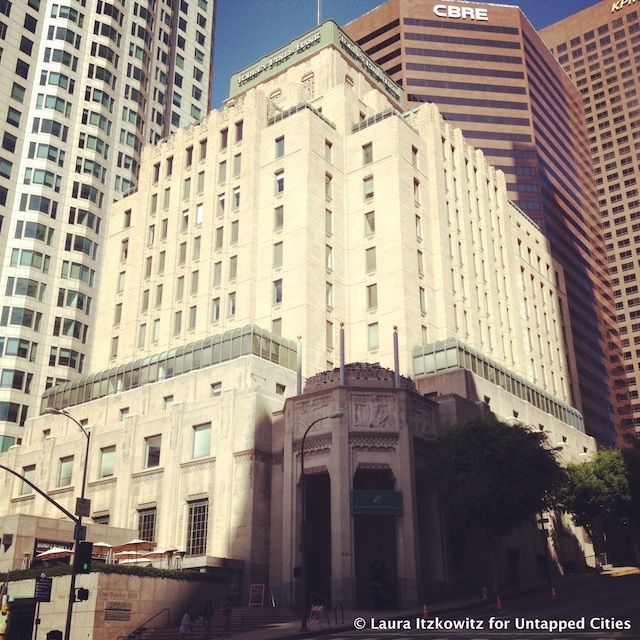
Built in 1931, the Southern California Edison Building was one of the first all-electrically heated and cooled building in the Western U.S. The building is a classic example of Art Deco architecture. The bas-relief figures represent power, light and hydroelectric energy. Inside, the ornate lobby contains seventeen different types of marble and a WPA mural by Hugo Ballin.
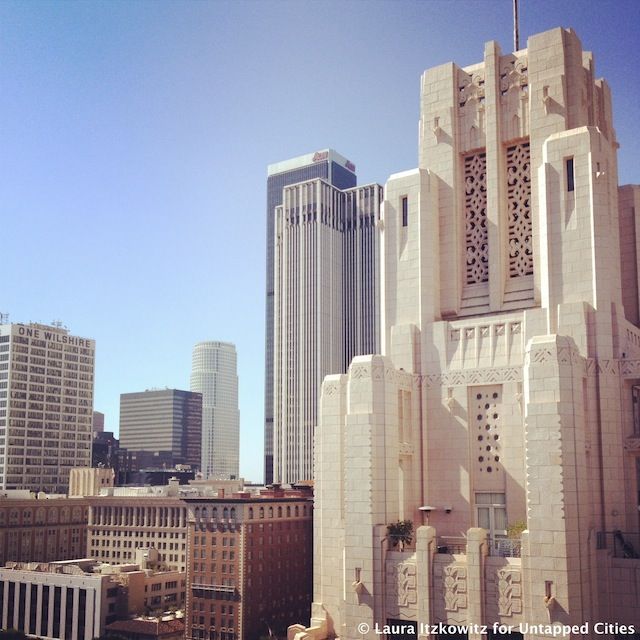
One of LA’s great examples of Art Deco architecture, the Title Guarantee & Trust Building was built in 1931 by the architects John and Donald Parkinson. The tower is characterized by its verticality, though the upper floors remain empty. Geometric flourishes adorn the terra cotta facade. The building was converted to private loft apartments, so unfortunately you can’t wander inside, but for a great close-up view of the tower, head up to Perch, the rooftop restaurant and bar in the Pershing Square Building.
Next, read about the Top 10 Secrets of LA’s Biltmore Hotel. Get in touch with the author @lauraitzkowitz.
Subscribe to our newsletter